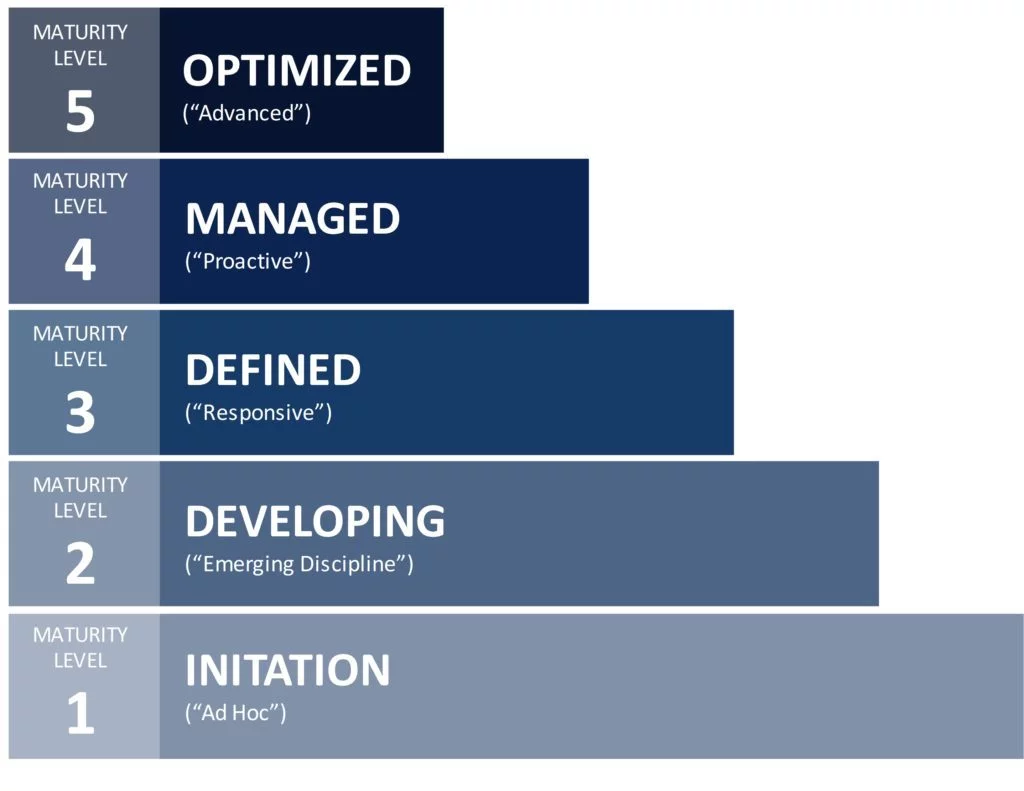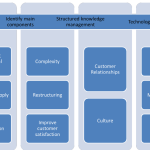Organizational culture includes a set of norms, routines, and unspoken rules of how things are done in that organization. An organization’s culture can be in different states of maturity, and these can be assessed using a variety of organizational and KM maturity models.
A maturity model is defined as a descriptive model of the stages through which organizations progress as they define, implement, evolve, and improve their processes.
This model acts as a guide for selecting process, improvement strategies by assisting the determination of the current process capabilities and the identification of issues most critical to quality and process improvement within a particular domain, like software engineering or systems engineering.
KM Maturity Models
There are a number of organizational and KM maturity models, mostly derived from the Capability Maturity Model (CMM).

The CMM was developed to describe the phases of software development processes, and the model was subsequently updated to the Capability Maturity Model Integration in 2000 (CMMI Project Team, 2002) in a better way.
The Capability Maturity Model describes five evolutionary levels in which an organization manages its processes. The five stages of the CMM are as follows −
● Initial − Processes are improvised, chaotic, rarely defined.
● Repeatable − Basic processes are established, and a level of discipline is maintained to stick to these processes.
● Defined − All processes are precisely defined, documented, standardized, and integrated into each other.
● Managed − Processes are managed by collecting detailed data on the processes and their quality requirements.
● Optimizing − Continuous process improvement is affiliated and in place by quantitative feedback and from piloting new ideas and technologies.
Infosys KM Maturity Model
Again, five maturity levels are specified, and each level is characterized by the efficiency of the knowledge life cycle, which consists of −
● Knowledge Acquisition
● Knowledge Dissemination
● Knowledge Reuse
Default
● The only way to create organizational knowledge is through formal training.
● There is a lack of management of knowledge.
Reactive
● Knowledge is only shared when there is a need for it.
Aware
● A basic KM system is developed and meets business requirements.
● Knowledge-sharing activities are sportingly encouraged.
● The advantages of KM are beginning to be realized.
Convinced
● Enterprise-wide KM system has been rooted.
● Quality and usage of contents are assured.
● Reuse of knowledge at a project level.
Sharing
● Knowledge sharing becomes a part of organizational culture.
● Organizational boundaries are discarded.
● Knowledge processes are continuously progressed.
CoP Maturity Models
The Wenger CoP life-cycle model provides a good characteristic to assess whether informal networks exist within an organization and whether they are recognized and supported by the organization.
The life-cycle model shows that a community requires to have attained the maturity and stewardship of knowledge levels in order to begin creating value for its members and for the organization as a whole.
The key features of the maturity model are as follows −
● Paulk organizational Maturity − represents the approval of a new technology or process within an enterprise, which is a very good match for the introduction of new KM functions.
● Fujitsu organizational Maturity − provides a fast and easy way of assessing how united or pervasive a culture is within a given enterprise, which can provide valuable guidance either in selecting pilot KM sites, if the enterprise is in the earlier stages, or in focusing on closely aligning KM with the overall business strategy.
● Paulzen and Perc Maturity − It is quite similar to the Infosys KM model and grants for incremental introduction of KM initiatives into an organization based on the phase of KM maturity.
● Forrester Group KM maturity − A model that marks on how employees acquire model relevant content, which is particularly well suited for an incremental introduction of knowledge support services within an organization.


